But what a holiday without fun board games for children and adults. Today I want to tell you more about board games that can be played with both family and friends.
Board games for children and adults - a brief overview
Board card game. You can play with children from 5 years. The rules are pretty simple. The main task in the game, as soon as possible to get rid of the cards. The game is very dynamic and fun, due to the fact that you need to constantly stop other players from being left without cards. The game can be played even together, even ten. But of course fun to play a big company. A big plus to UNO is that you can take them anywhere, for this you do not need to take a big box and you do not need a lot of space to play.
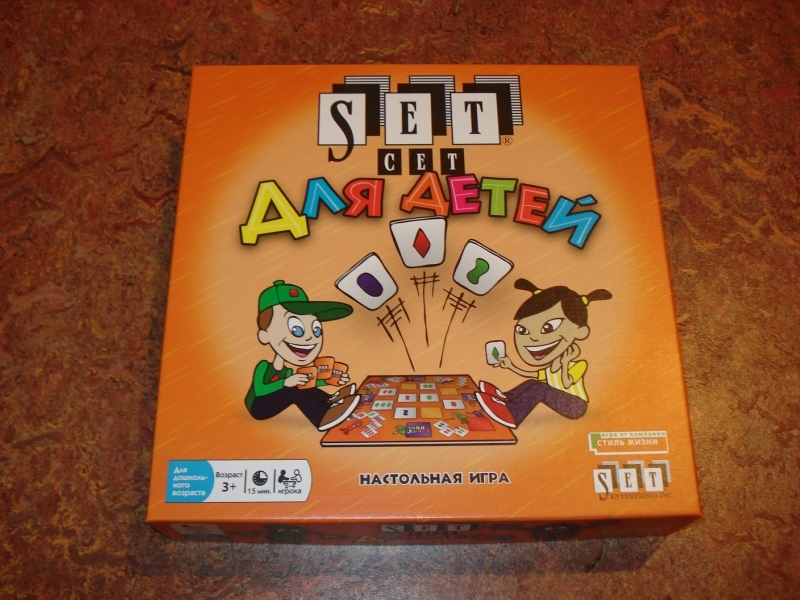
Great game for any age. At one time we played it all the time. She is very exciting. The game consists of cubes, which are laid out on top of each other, with each row perpendicular to the next layer. The meaning of the game is that the player must carefully remove the bar from the bottom row and put it at the very top of the tower, without destroying it. Loses the one whose tower collapses. It's not at all difficult to play until the bars have been taken out a lot, but the higher the tower becomes, the harder it is to remove the bar.

Probably one of the most famous games. One shows the word with gestures, others guess. Always fun and not boring. You can play just without special cards, and you can buy a board game, where there are cards with tasks, what to show. In such a game points are awarded, and you can break into teams or play each for yourself.

Board game where players are divided into teams. The meaning of the game is that the player must clarify the word to his team. And the more words the team guesses in the allotted time, the more it will score points and win accordingly. Words are given on cards, they need to be explained only with words, without gestures. Now there are so many versions of Elias - children's (from 5 years old), family, for a party, advanced and so on. Everyone can choose their own 🙂

Something like Elias. Players also split into teams. Only now words need not only to be explained. There are other conditions here, for example, to draw what was conceived without uttering a word, or to show without words. And the team players for certain time must guess the maximum number of words. The game is very cool, fun and educational. Great for family game with school children. The only problem - big box with cards and with a field of play. It is convenient to play only at home.
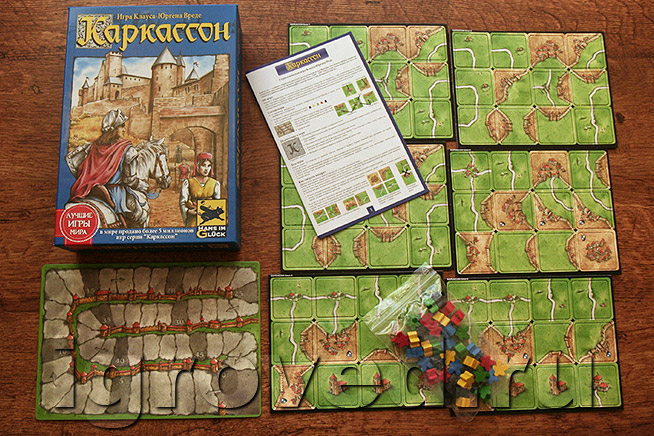
Funny game, again with words. You are given a card with a syllable. The player must as soon as possible to call the word in which there is this syllable. But besides the cards, a toy bomb is taken into the hand, which can explode like a toy at any moment. Players try to remember the word as soon as possible and pass the bomb on. After all, if the bomb explodes in your hands, you take an additional card. And the one who has no more cards wins.

An excellent game for children that develops attention, memory, responsiveness and ingenuity. The game has cards on which there are three components at once - colors, numbers and drawing. Players are dealt cards, and then spread one by one on the table. The one who first finds a match with his card must quickly cover the card with his palm. The one who first collects a set of cards from all three components wins.

Once at a party playing this fun game. This is a true outdoor game. It consists of dense material on which circles of four colors are drawn. There is also a roulette on which teams are written, for example “right foot, red”. In this game you need a lead. Lead spins roulette and says the team. And participants perform teams, putting their hands or feet on certain circles. The one who does not keep in an inconvenient pose and falls will lose. And poses are not only inconvenient, but also very funny.
I gave an example of board games that I’ve ever played myself. If you know or played a game that you really liked, then be sure to post in the comments. Let's expand together my list of interesting board games for children and adults.
Natalia Sokolova.
According to our research, games increase school performance in school subjects, develop logic and communication skills. We turned to child psychologists and invited students of three classes to play board games after school. Pupils from the other three classes left home immediately after class. The study lasted six months, and before it began, the psychologist identified several benchmarks for which he tracked changes in the middle and at the end of the study. The results were compared with the control group - children who did not play board games.
The players in the “Hive” increased attention concentration: the guys began to listen to the teacher more attentively and quickly memorize new information. The player’s task is to surround the hive queen, which belongs to her opponent, with insect chips. Each insect has its own abilities, for example, the ant runs across the edge of the hive by any number of steps, and the grasshopper jumps and flies in a straight line through the insects of the enemy.
Playing “Danette”, a child begins to think outside the box, to fantasize, learns to communicate and consistently express his opinion. During the game, the leader reads the story, and the players ask questions and gradually figure out what really happened. For example, a man ran out of the tram, and the second followed him with shouts: “Take everything, but return the ticket!” What happened? Answer: the pickpocket stole a purse from the passenger, in which there was a winning lottery ticket for a large amount. The passenger noticed the loss on time and chased after the thief.
The good news is that since your childhood, with lots of lotto, chess checkers and a card fool, a lot of topical, exciting board games burst into our lives for every taste.
N astrol game - universal entertainment, because it works in all weather conditions. What is a modern family board game? This is a game that will be equally interesting to both parents and children, while its rules are simple and clear to the child.
What adults and children can compete on an equal footing?
Of course, in the dice rolls in the game Monopoly!
One of the oldest family board games. The history of its creation goes back to 1934, in the midst of the American Great Depression. Since then, the game in which players use the dice to move around the playing field, buy up real estate plots and try to ruin competitors remains unfailingly popular among family audiences. And it is clear why - the die roll does not require great analytical skills, and the child can get lucky on a par with adults. The bidding process, when the winner is still not obvious, is really fascinating and exciting, and the goal - to collect millions of gaming and destroy opponents - seems quite achievable.
The game, of course, there are drawbacks, which is not surprising, based on its venerable age. The first drawback arises from its own dignity - the cube does not understand who is a strong player and who is weak. And if to enter the game is a plus, then for a player who has more than a dozen games behind him, this is already a minus.
The second drawback is the tightness. Very often, after the leader appeared in the game, the rest of the players still have the illusion that they have a chance to win. And in order to ruin competitors at zero, the leader may need more than one hour of playing time.
From the long game we go to the games very fast.
Dobble, Barabashka, Wild Jungle, Seth, Panic Lab
In games of attentiveness and reaction, children are usually even more successful than adults. So this type of games is the best for joint games in the family. The general meaning is simple - to see something before others and grab it something.

The most popular game in this genre in Ukraine today is undoubtedly Dobl. Round cards with bright drawings in a compact tin box immediately attract attention, and it will be quite difficult to tear a child or an adult from the game.
It would seem, what is easier - to find a pair of identical drawings on two cards? Here are just pictures of bright, multidirectional and just run away from sight! And around - rivals who can see the right pair before you. The result - a lot of drive, fun and adrenaline.
Dixit
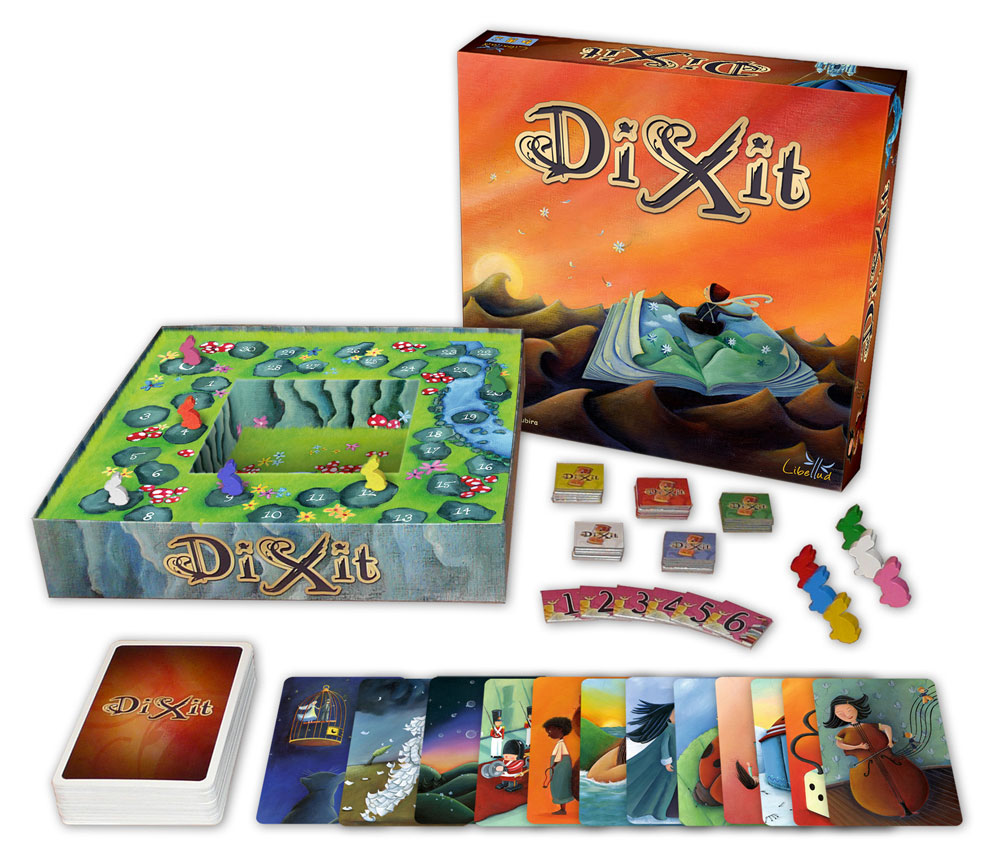
Unique game mechanics of associations made a board game. Dixit one of the most popular around the world. Children without adults will not be able to play this game, however, thanks to the original design, psychological component and little conflict, it is great for family leisure, starting from 8-10 years old and up to grandparents inclusive. You have a deck of cards with beautiful surrealistic drawings. The player comes up with an association on one of the cards, and the others try to guess the hidden card. In recent years, the game has become confidently number 1 in Ukraine at parties, family games and psychological training.
Alias
Family of games Alias A vivid example of how a popular game for a youth audience migrated to the family format. In Alias, a player pulls out a card with words and must very quickly explain to the team mate as many words as possible. An important limitation: you cannot use single-root words and pantomime.

The more words explained, the further your team moves forward. Fun, dynamic, and also useful for children. An important caveat is that not every Alias game is equally useful for a family evening. Alias Party - definitely not your option. Alias. Say otherwise - suitable for adults and children from 10 years. Well, for playing with children 7-8 - a specially created version of the game Alias. Family.
Scrabble / Erudite

Another game in which we deal with words is the “old man” popular all over the world. Scrabble. A crossword-like game in which players from letters collect words on the playing field and get points for it is interesting for both adults and children. And also there is an additional function - expansion of vocabulary.
And what is Scrabble? Yes, the same Scrabbl, which in the USSR produced under a different name, so as not to bother with copyright.
Carcassonne

One of the most popular games in the world - Carcassonne. It will definitely not leave indifferent parents and will be clear to a child already at 8-9 years old. From cardboard squares with different types of terrain (tiles), players spread the whole world.
Tiles are laid out according to the domino principle: the road is to the road, the field is to the field, the city is to the city. Since the player has a lot of options where to put the tile, you have to decide where it may be most advantageous to get victory points. The game has little conflict - the players almost cannot interfere with each other directly, therefore, it has gained popularity as a calm and at the same time exciting family game. A lot of additions and variations already created on the basis of Carcassonne and continuing to appear, only confirm its relevance.
My fun farm
There is something to boast in a family format and Ukrainian developers. My fun farm - These are several animals for each player to feed. The better you feed your pets, the more points it will bring you at the end of the game. But first it is necessary to purchase seeds, then sow them, then harvest the crop and then give part of the crop to feed.
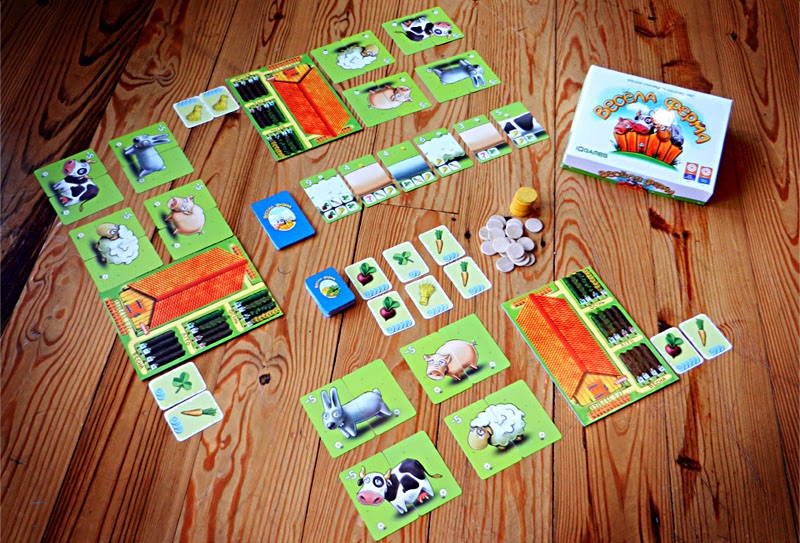
And each move will have to decide which of the available actions to choose right now, not forgetting to look at the neighbors for the troubles on your farm, so that, if possible, to prevent them a little.
The game is framed fun and beautiful, so it is unlikely to leave your children indifferent. And the process of feeding animals, when an additional part of the body is added to the animal, and it gradually turns from a rabbit into a long taxocup or from a sheep into a sheepfowl, invariably causes a smile.
At the same time, the gameplay is by no means primitive and is guaranteed to attract adult players.
Uno, Svintus
If in childhood you played an ordinary bridge of cards in a bridge, then the game Uno you already know. Yes, this is a special deck for this game. The goal of the game is to discard all cards from hand by suit or face value. There are various special cards in the game - skipping the course, changing the direction of the course, changing the suit, etc., which not only add variety to the game, but also make you wonder how to use the cards more efficiently - save it for later use or quickly reset to reduce penalty points in end of the party.

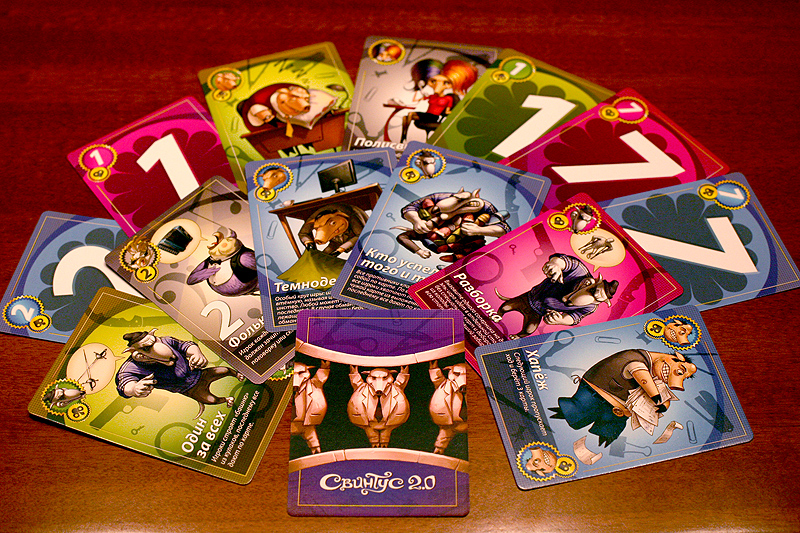
Special excitement - do not forget to shout “Uno!” When you discard the penultimate card. If you forget - drag two penalties from the deck. Elementary, but many people forget to do it at the moment when the victory is already so close :)
Svintus - A popular version on the theme of Uno. Several changes to the rules made the gameplay more fun and dynamic. In this case, it is necessary to bear in mind the “viciously piggy” design - the basic game Svintus is intended primarily for young people and teenagers. And for the game with children of preschool and primary school age, the more “kind” Young Svintus will be better suited.
Colonizers (Catan)
In contrast to the "old woman" of Monopoly, which by mistake is called "economic", just Colonizers are exactly the best economic game for a family audience. And although there are no familiar banknotes in the Colonialists, the game has a constant exchange of some resources for others, and the course depends both on constant conditions - the presence or absence of special cities on the player, and on changing demand and supply for a particular type of resources. In general, to change one thing for another, and both at once - for the third one in order to develop their settlement on the island in this game it will be pretty.
However, as in Monopoly, the cubes in the Colonialists also play an important role - it is the results of the rolls of the cubes that determine which territories bring resources to players this turn. So everyone who loves to roll the dice (and who of the children doesn't like this? :) will be happy.
The successful combination of the factor of chance and the opportunity to choose a strategy makes it possible to call it one of the best economic family games for parents and children aged 10 and over.
Ticket to Ride (train ticket)

And in this beautiful and atmospheric game we have to build railway routes. The game is not economic, but rather logistic. During the game, we will receive points for laying routes between neighboring cities, and for performing secret tasks to connect cities that are distant from each other.
The magnificent playing field, a lot of plastic carriages, colorful cards of cars and routes - all this is done in the retro style of the early twentieth century, and immediately sets a cozy and slightly fabulous mood. Extra bonus - we learn geography.
Put your child on board games, and he will no longer have money for other drugs;)
What can brighten up family leisure on long winter evenings, when a snowball is circling outside the window, a beautiful Christmas tree flashes in the room and the house is filled with an atmosphere of comfort and warmth? It seems to me that in such magical moments there is nothing better than getting boxes with your favorite board games from the shelf and immersing your whole family for an hour or two into the fascinating world of interesting game scenes. Of course, we also have the favorite table with our little boy, which we have been playing with for a long time and still with great pleasure. But we also do not forget to slowly get acquainted with the new board game stories. Over the past few months, several amusing games have appeared in our game store with our son, which we really want to talk about today. All these games are united by one remarkable quality - they are perfect for sharing family leisure activities (tested in practice). Just what you need in the fabulous days of the long-awaited New Year holidays.
And now we invite you with us to look at the colorful game boxes and find out what is inside.
Board game "Appetizing Castle" (ZVEZDA) ()
Today's review I want to start with this game, because it is very exciting, plot and consists of many interesting elements.
Inside the bright medium-sized box depicting a huge hungry monster destroying built castles, we find the following game elements:
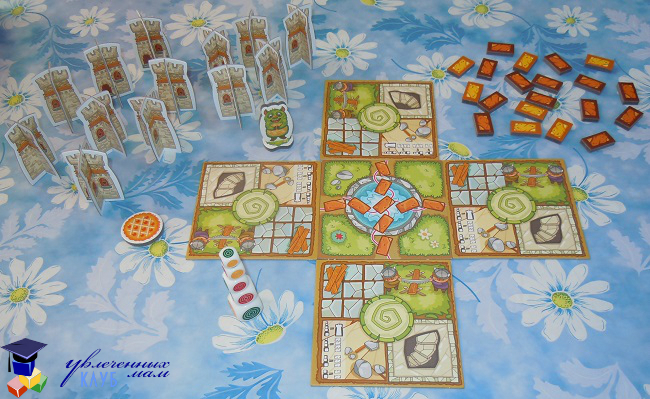
The game is designed for 2-4 players from five years.
According to the legend of the game, a hungry brick-eating monster brings great horror to the princess, because he had already eaten her castle once. Now she turns to the players for help with a request to build for her a new castle with 4 towers. Who would rather build such a castle, he will be the winner of the game.
And this can be achieved with rather simple, but very entertaining actions - throws of five dice and building of them pyramids. It will depend on the number of fallen faces of the cubes of one how quickly the process of building the protective turrets of the castle will proceed.
Very clear and detailed with explanatory pictures of the rules of the game.
In the center of the table is placed a small square playing field - you can choose any side with yellow or brown bricks. Yellow bricks more, so the monster will walk on them more slowly. Beginners should choose this option. In the center of the field is a brick-eating monster. Each player attaches his own foundation to the playing field - a square card of the same size with building elements of the same size. On each foundation is installed on one tower. The remaining turrets and bricks lie next to an imaginary construction site. 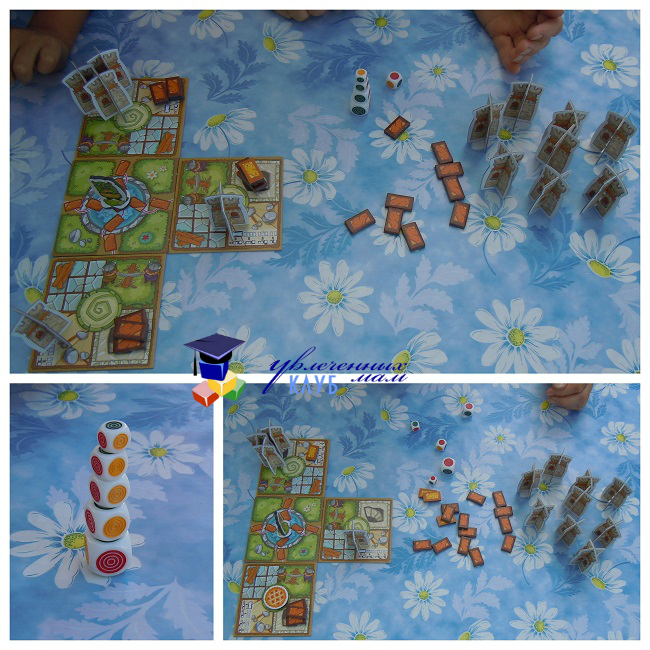
The task of each player - in his course to build a slim of five cubes of different sizes. After the first roll, the color that the player will collect this turn is determined by the biggest die. If on the few remaining dice the same color fell out, then you can immediately build a pyramid of them. If with this color only one cube fell out or not at all, then the cubes can be transferred again, but without the largest one. It is allowed to transfer the cubes several times, but after each roll it is necessary to install at least one die on the pyramid.
The remaining cubes with faces of other colors after the last throw become the monster's steps - how many cubes are left outside the pyramid, the player will advance the monster along the bricks of the playing field by so many steps. Which way the monster will go, the player determines - as a rule, he directs the monster towards the side of his opponent's castle.
As a reward for the assembled pyramid, the player receives bricks from the construction site - for each cube, one brick, and for all 5 cubes - a whole tower. The resulting bricks or tower are set on the player’s foundation. Then the move is passed to the next player. 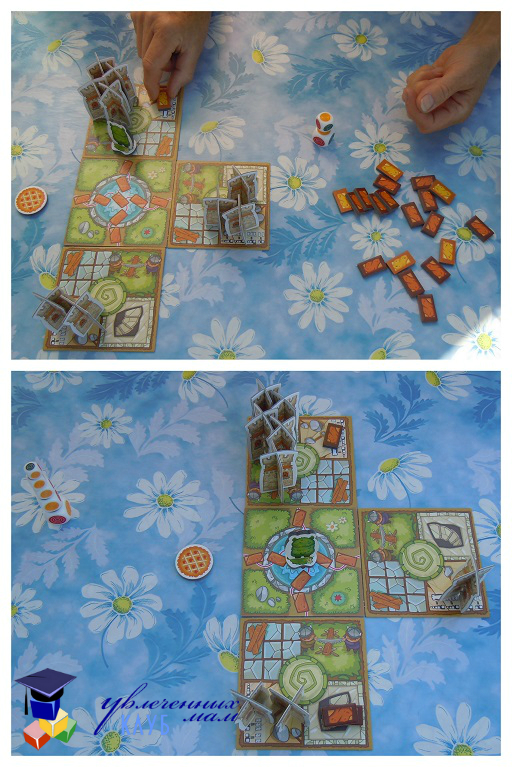
And what about the brick monster? How does he act? If he gets to a castle, he will surely eat all the bricks on the foundation or even swallow the entire tower. Then the player returns all construction Materials or eaten tower on the construction site and begins construction again. A well-fed and happy monster returns to the center of the field. But as a consolation to the injured player, the princess sends a delicious cake that gives protection from the next possible monster attack. In this case, he will simply feast on the cake and return to the center of the field, leaving the bricks and towers intact.
To win, each participant strives to build on its foundation 4 towers of the castle for the princess as soon as possible. Thus, the winner of the game will be determined.
The game "Petite Castle" is very dynamic and emotional, and therefore fell in love with our family from the first time. Throw so many cubes at once, conjure over them to drop the necessary colors, build pyramids, collect treasured bricks and rejoice at each turret built, control a pretty looking-looking monster and feed it with a delicious cake - all this gives a lot of positive emotions to the child.
Educational game "Market" (Trefl) (series "Koala Good Play and Teaches")
Manufacturer's recommended age of players - from 6 years. 2-4 people can play at the same time. A very bright big game box, which depicts children in the fruit and vegetable market, will definitely attract attention, as happened in our case.
The game includes:

All game pieces are small in size, but very durable and smooth - it's nice to hold them in your hands and play with them. And we often borrow coins and bills from this game for other plot-role-playing games. Also, we did not ignore the very strong frames from the game elements - we use them as templates for the image of the most diverse. 
Well, now more about the rules of the educational game "Market". Surely here in playing form The child’s acquaintance with the sphere of commodity-money relations is taking place, and also children learn to show skills of enterprise and strategic thinking.
Before the start of the game, each player organizes his vegetable shop, combining fragments of a seller’s card and boxes with prices. Also on the hands of each 3 cards wholesale base and check box promotions. Cards of buyers are on the table with a pile image down. Goods tokens are also stored face down on a common wholesale base. And all the coins and banknotes are in the bank.
The goal of each player-seller is to organize a trade and earn the largest amount of money.
At the beginning of the game, sellers take goods counters at a wholesale base of 5 tokens and, without showing other players, choose goods that they want to sell immediately. Each product token is placed next to the selected price of the vegetable shop. The remaining goods are being sent to the warehouse. Checkbox promotions placed next to one of the boxes. 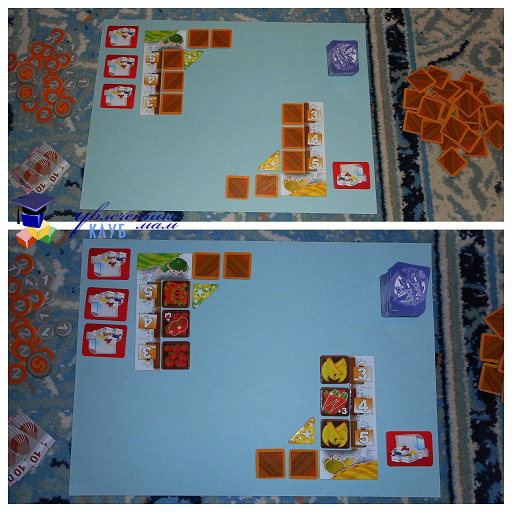
The market opens and the game begins. Players take turns pulling out from the pile of the customer card with the image of the product that the customer wants to buy. Of course, the buyer will choose the product at the best price. The seller from whom the purchase took place, takes from the bank the amount of money indicated on the price list and keeps it. The token with the goods sold is sent to the wholesale base, and the card of the satisfied buyer is put aside. If there is no necessary product on the market, the client leaves without a purchase.
Also, in his turn, the player can, instead of the buyer's card, play the wholesale base card and “go” for a new product, thereby expanding not only his range, but also the vegetable shop itself. The rules describe in detail the most varied options and subtleties of the game, which are quite easily absorbed by the child and are used in the gameplay. 
The game ends when the customer cards end. Unsold goods, both in the shop and in the warehouse, are considered spoiled, so there will be no reward for it. Then begins the calculation of all the money earned by each seller (no doubt, kids will be happy to take on this business). The most successful and enterprising player-seller is declared the winner. 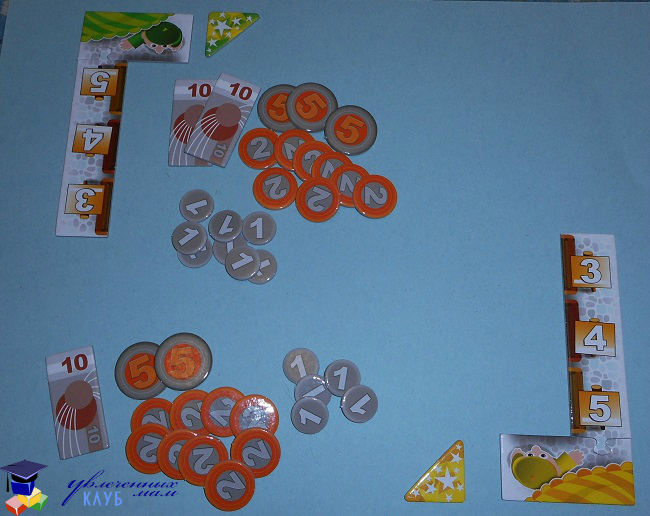
The first time a game for a child is more introductory and educational in nature, and later the children are happy to immerse themselves in an exciting market process and easily begin to manage numerous cards, tokens and banknotes. In fact, this is a variation of the role-play game played by the children in the store, only here, in my opinion, more complex elements of strategic thinking are added, which also comes gradually with each new round of the game.
Want to play with your child easily and with pleasure?
The educational game “Market” is a good variant of the child's training in commodity-money relations. And when the whole family gets into the game, then the usual purchase and sale of fruits and vegetables turns into an exciting competitive activity. After all, the more sellers are, the higher is the competition in the market, so it is necessary to think a lot and carefully how it is more intelligent and more profitable to sell goods in your shop.
Board game “Labyrinth. In search of treasure "(Ravensburger) ( Ozone)
For the game “Labyrinth. In search of treasure, we return with our little son again and again. Its advantages are in compactness, a small number of elements and, of course, in an exciting game plot. Especially for kids - lovers of passing all sorts of different levels of complexity, such an intricate game will definitely appeal to you. After all, there are not only labyrinths, but also treasure chests, secret doors, and multi-colored keys. 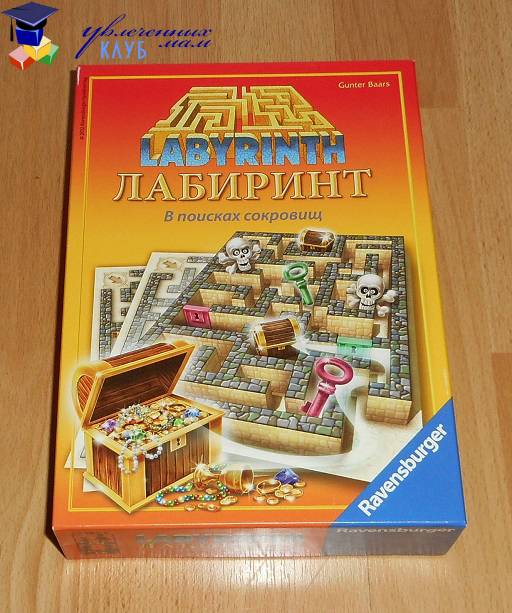
The game can take part from 2 to 6 people, the recommended age of 7 years.
The game includes:
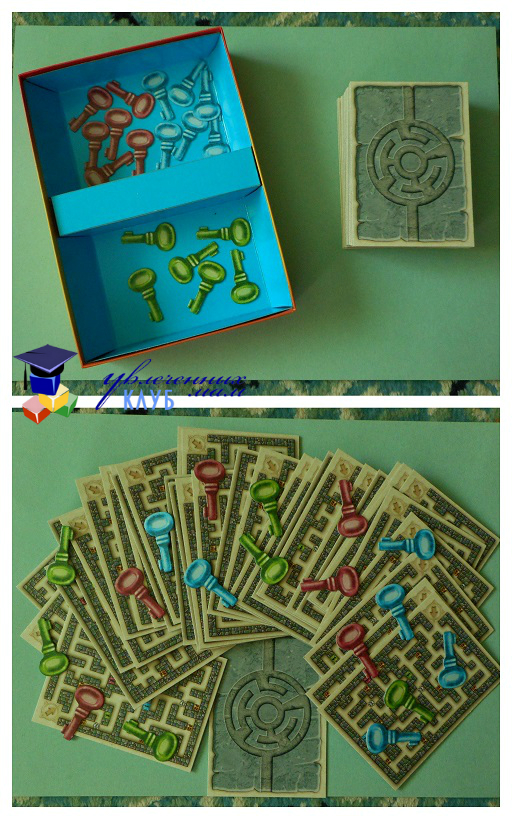
The goal of the game at first glance is quite simple - as soon as possible, walk your eyes or your finger through the maze, at the same time count the number of treasure chests in the way and name the correct number first. The fastest and most attentive player takes this maze card to himself. In total, each player must collect 5 cards to win.
What are the difficulties and obstacles in the way of the players? First of all, there are several paths from the entrance to the maze, and you need to have time to mentally walk through all possible paths. The second and most important difficulty is the multi-colored keys, which players gradually receive along with unraveled maze cards as a reward. These keys open secret doors in the labyrinths - each key fits to a door of the same color. Therefore, for the owners of keys, the task becomes more complicated - they have to mentally open the doors of the corresponding colors, go through a longer way during this time and find even more treasure chests. The more keys the player has, the more doors he needs to open and go through more tracks. As you can see, everything is not so easy on the way to victory. 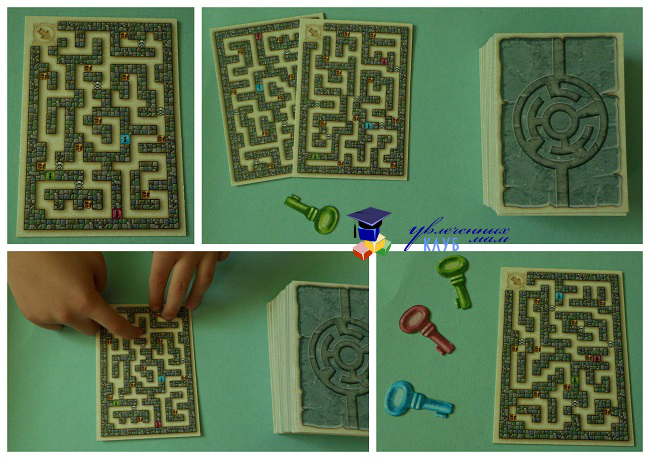
On the back of maps with labyrinths there are solutions for each specific case - without keys, with one, two or three keys. These decisions are opened by the player who is the first to place his hand on the card and loudly say the number that is right in his opinion. If his variant turns out to be correct, then, as confirmation, he shows all participants the back side of the card and takes it to himself. If the answer is incorrect, then he returns the card to the table and no longer participates in this round. The game with this card continues among the remaining players until the correct answer. And so on until one of the players has 5 cards in his labyrinth. 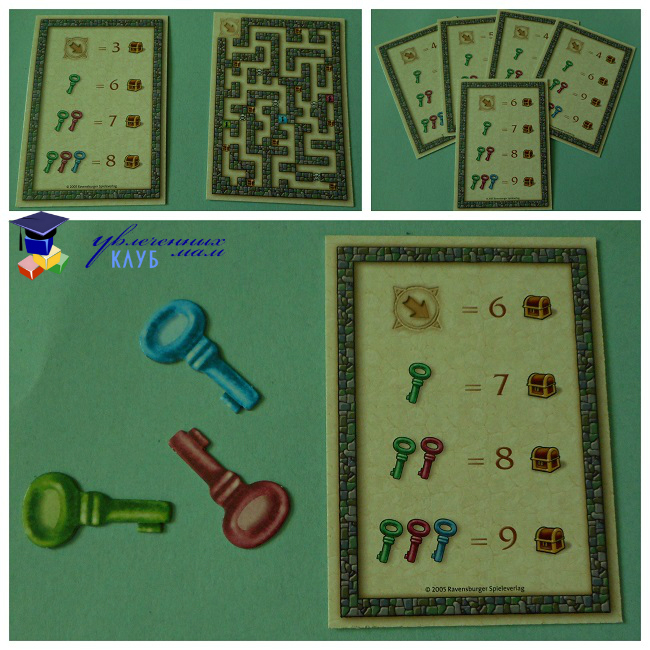
Of course, this board game perfectly develops attentiveness and speed of reaction. The more participants, the more dynamic, more exciting and more exciting the gameplay goes. But if adults participate in the game on a par with the child, then it is necessary to adapt to the rhythm of the child, not to rush too much and give him the opportunity to be the first to say his decision. At least for the first time and until the child masters well in the cards of the maze and the rushing rhythm of the game.
Logic game "Labyrinth" (Bondibon)
It so happened that this review included two games for the passage of labyrinths. Of course, this is not a coincidence, but simply a reflection of the interests of my son at this stage. He likes the labyrinths in various manifestations very much - that is why my choice focused on these board games. I just try to support the game and developmental hobbies of the child.
As for the game “Labyrinth” by Bondibon, logical thinking and spatial perception are well trained here. 
The game "Labyrinth" (with an interesting addition to the name "For a clever adventurer!") Is a small plastic game box of about 15x15 cm, under the transparent lid of which several game elements “hidden” compactly:

Immediately clarify that this is a game for one player aged 7 years (as stated by the manufacturer). In my opinion, 7-8 years old is really the most suitable age for acquaintance with logic puzzles of this kind.
The rules of the game are quite simple: choose a card with a task, place elements on the playing field by card, then you can start the game by moving the details of the wall across the field and gradually moving the pawn towards the exit. The task is considered completed if the pawn gets out of the maze. But behind the seeming simplicity there is a great work of the child’s thought (and adults too), thinking through and repeating various moves repeatedly until the right logical solution is found. 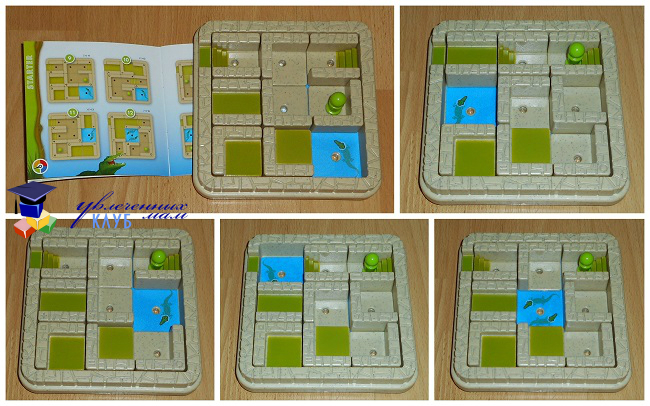
Different levels of parts with walls create an additional complexity - some of them are low, others with elevation, only ladders can connect them to each other. A pawn cannot jump over just from the bottom to a high level - first, the elements need to be properly joined with the help of a ladder, and then moved the pawn further. A player can always check the correctness of his moves by referring to the options for each task at the end of the book. 
At first, we played with the little boy together - we placed the elements on the field according to the selected cards, then together we looked for possible ways out of the tangled maze. Began, of course, with the most simple tasks for beginners. Now the son himself is already trying and trying to solve difficult logical puzzles. Sometimes it turns out, sometimes calling adults again for help. Anyway, similar mind games - A great exercise for the development of children's thinking, and these board games must appear on the game shelf of the younger child. “Bondibon”, by the way, has released a whole series of similar compact desktop puzzles - you can choose the interests of your child.
Another important plus of such game boxes is their compactness, tight-fitting case and plastic parts, which makes it easy to take them on the road and spend time enthusiastically on all sorts of trips and long waits.
Funny board game "Kittens in pajamas" (Tactic)
A big box with the board game “Kittens in pajamas” came to us quite by chance when meeting friends who wanted to give my son a gift. Just saw this game, bought and immediately presented. At first, I was a little embarrassed by her age recommendations (from 3 to 8 years), but when we opened this funny box at home, put the playing field and elements in front of us and tried to play it, then my doubts immediately disappeared. The game was very interesting, easy and dynamic - just a wonderful gift. 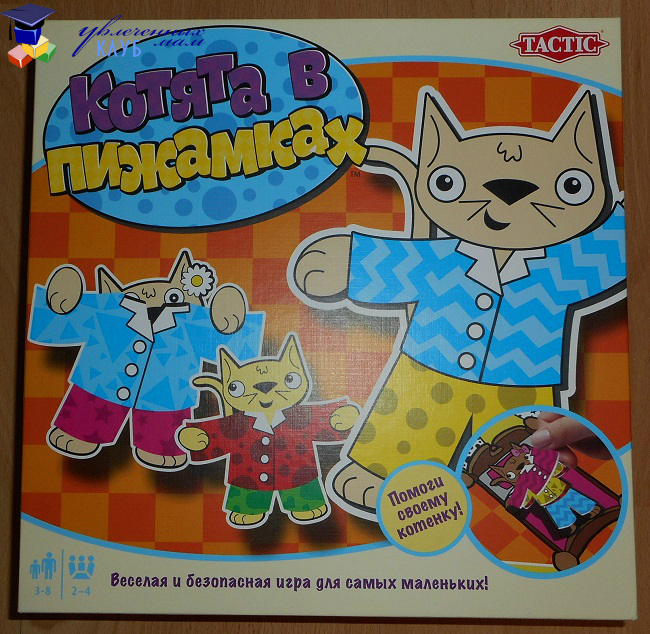
Of course, it’s better to start playing more early agedeclared by the manufacturer - from 3 years. Then here are added wonderful developmental moments - color, shape, attentiveness. But older children will also definitely find their attractive and fascinating sides of the “Kittens in pajamas” board game.
If we turn to the game itself, it consists of the following very high-quality, bright and durable elements:
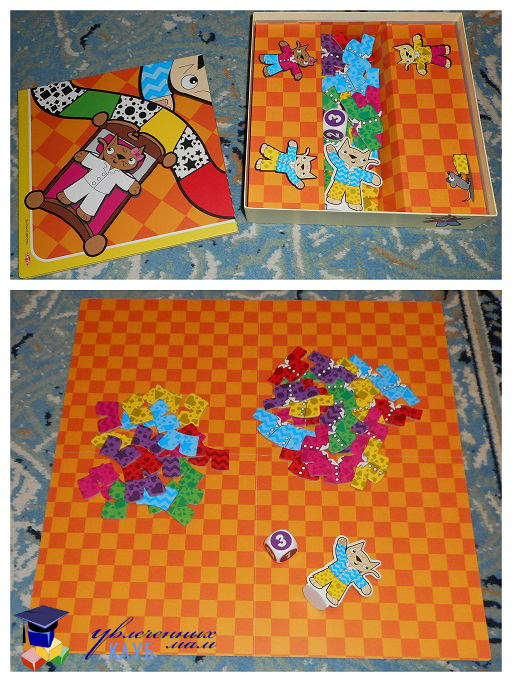
The playing field is laid out in the center between the players (2-4 people can participate in the game), all parts of the pajamas are mixed and distributed to the players (5 blouses and 5 pairs of pants for each). Players “dress” their kitten in their pajamas, putting all the pieces of clothing on each other. Cat figure is set to any division of a multi-colored walkway. The youngest player rolls a die and the game begins. 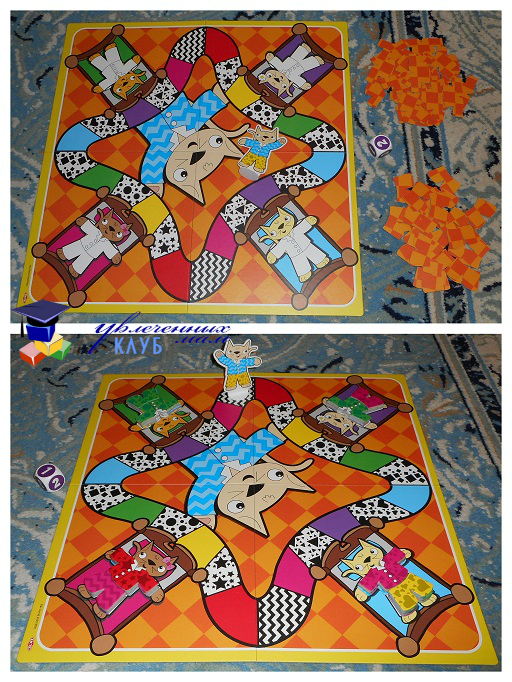
Sponsor of the post: Concept car: Anyone who wants to know what is happening in the world of cars, everyone whose hearing caresses the roar of the engine, all motorists, all car dealers - welcome to the auto.VERcity online resource!
A source: factroom.ru
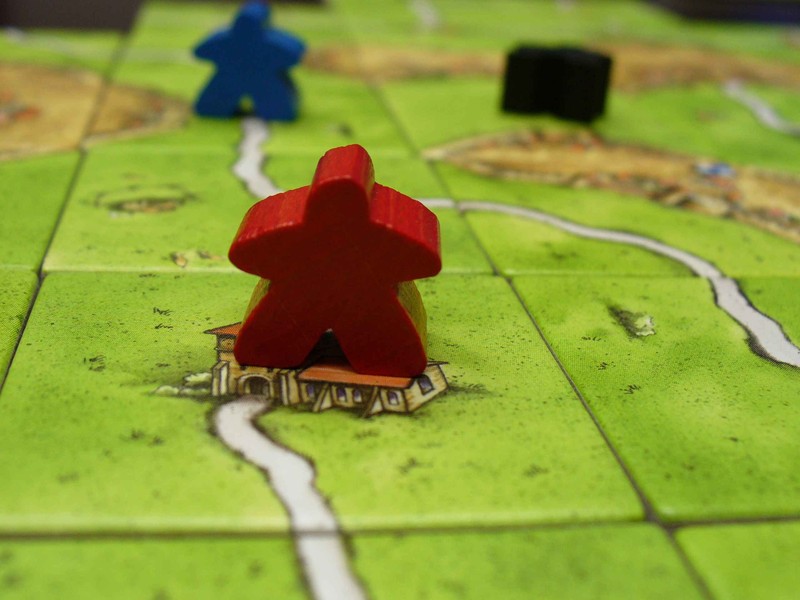
1. Carcassonne
- Classic: 5
- Complexity: 2
- Duration: 3
- Number of players: 2–6
- Age: 8+
Carcassonne was invented in 2000 in Germany, and already in 2001 it became the game of the year in this country. The rules of this family turn-based strategy game are straightforward: players gradually build a field, laying out cards with a picture of the terrain on the table, and occupy them with their chips, which become knights, peasants or monks depending on their position. The task is to occupy as large a territory as possible, including fields, rivers and castles, thereby gaining the maximum number of points.

2. "Munchkin"
- Classic: 5
- Complexity: 4
- Duration: 4
- Number of players: 3–6
- Age: 10+
"Monsters urine, grab treasures, substitute friends" is the motto of one of the most popular games of this year. “Munchkin” is a parody of both turn-based and card games. The rules here are quite complex, you will have to understand, delving into every detail: there are maps, doors, monsters, races and levels. As well as "clothes" and the possible death of a player. However, having understood this role-playing game, the whole company turns from normal, mentally healthy people into uncontrollably laughing hysterics with signs of paranoia. The fact is that during the party you can help a neighbor (of course, for selfish purposes) or interfere with him (with the same ones). Due to the complex combination of cards and moves, a controversial situation may arise that is not described by the rules. The creators of the game offer to solve it loud squabble between participants. The winner is the one who first reaches level 10, battling monsters and clever rivals.

3. "Monopoly"
- Classic: 5
- Complexity: 3
- Duration: 4
- Number of players: 2–8
- Age: 8+
“Monopoly” (in the USSR and Russia also known as “Manager” or “Businessman”) is the most popular economic strategy of all times and peoples. Since Charles Farrow sold the first 5,000 self-made copies of the game to his native Philadelphia in 1935, one and a half billion people have played it. If someone has forgotten the rules, here they are in brief: having a start-up capital at the beginning of the game, participants must multiply their wealth and ruin their rivals. All this happens on a square playing field, and “businessmen” use cards, money and chips. The classic "Monopoly" has acquired many add-ons that can be found in any online store of board games.

4. "Elias"
- Classic: 4
- Complexity: 2
- Duration: 3
- Number of players: not limited
- Age: 6+
Finnish board game Alias has become the most popular in the country. This is largely due to the uncomplicated rules and excitement that "Elias" inflames in the participants. The rules, if you do not go into some of the nuances, are as follows: for a minute, which is measured by an hourglass, you need to explain as many words as possible from the cards to the players of your team. Use of synonyms or translation into English is prohibited. In augmented versions, sometimes words have to be drawn, to depict a pantomime, or to explain with certain emotions: theatrically sobbing or inadequately laughing. The team that first reached the end of the game board, on which all the players' successes are recorded, wins.
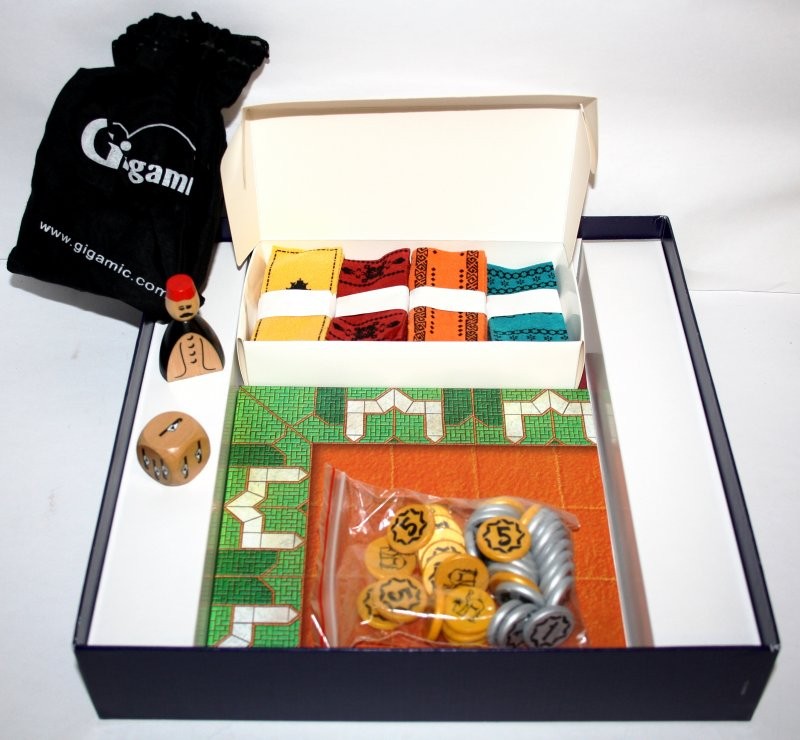
5. "Marrakesh"
- Classic: 1
- Complexity: 2
- Duration: 3
- Number of players: 2–4
- Age: 6+
Marrakesh is one of the most popular board games in France and Austria. This is a very beautiful family economic strategy, which is primarily unusual for “chips” made of cloth. The Marrakesh market lives its impetuous life, and soon it will be necessary to choose the best carpet seller. It is for this funny title that participants have to fight.

6. “Jenga”
- Classic: 5
- Complexity: 2
- Duration: 3
- Number of players: not limited
- Age: 6+
Jenga in Swahili means “Build!” (This is imperative). But actually this game is about how to break as slowly as possible. From the base of the tower, installed at the very beginning of the game, the players alternately pull out the bars and put them up, making the structure taller and less stable. The loser is the one during the course of which (or immediately after) the tower still collapsed. The game “Jenga” is quite intense, so the whisper of a walker: “I will kill the one who breathes” is quite a normal situation.
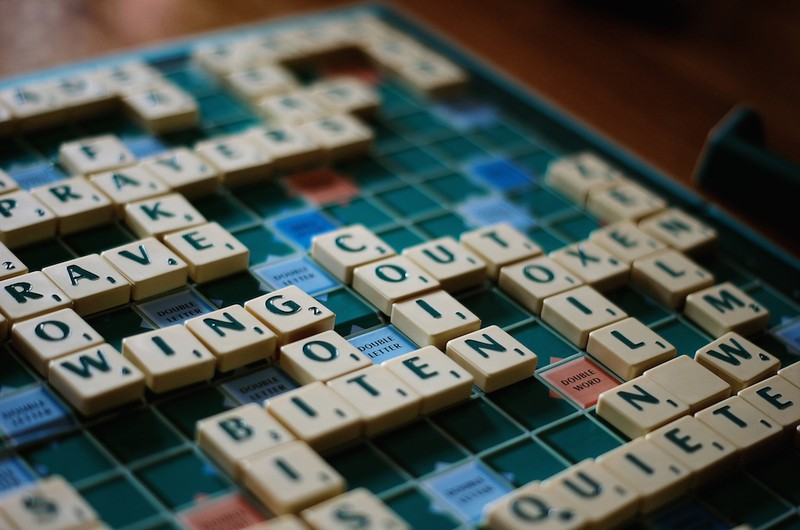
7. Scrabble
- Classic: 5
- Complexity: 3
- Duration: 3
- Number of players: 2–4
- Age: 8+
“Scrabble” or “Erudite” is the same classic as “Monopoly”. "Scrabble" in pop culture long ago acquired the title of the main game for nerds, but this did not become less popular. Participants receive seven starting letters (there are 104 in total) and spread them on the field 15 into 15 squares, making up words. Of course, they should be as long as possible, which guarantees victory in the game. Not everyone, however, knows that the Russian version of Scrabble cannot use any words other than common nouns in the nominative case. It is also impossible to use a dictionary, more precisely it is possible, but only to check whether the word that has arisen on the board really exists.

8. Scotland Yard
- Classic: 3
- Complexity: 3
- Duration: 4
- Number of players: 3–6
- Age: 10+
Scotland Yard is a game named after the headquarters of the London police and paying tribute to the legendary British detective stories. The field shows a map of the center of London, the players at the very beginning select the criminal by drawing lots, who puts a cap on his head to hide his eyes. The rest are policemen who will catch the robber. He, unlike his pursuers, walks "secretly", writing down his moves on a sheet, but not showing it to the others. Once in 5 moves, he opens his location. The police must cooperate to drive the criminal into a corner.

- Classic: 5
- Complexity: 3
- Duration: 3
- Number of players: 2–10
- Age: 7+
“Uno” is a sophisticated version of the one hundred and one hundred summer camps hit. The game, whose name translates from Italian and Spanish as "Odin", was invented in the 1970s, and board game fans who do not know about it almost do not exist. The deck consists of 108 cards, divided by colors and numbers from zero to nine. In addition to them, there are other cards that change the color that is in the game, the direction of moves, or allow players to exchange decks with any other participant. The point is to get rid of all the cards, shouting "Uno", when only one is left on the hands. After one player wins, the others score points. Each company sets its own threshold (for example, 400 points), after which the participant leaves the party after being defeated. Experienced players suggest: in order to give some insanity to the process, you can agree not to slow down and play as quickly as possible. Hesitated - you pass the move to the next.
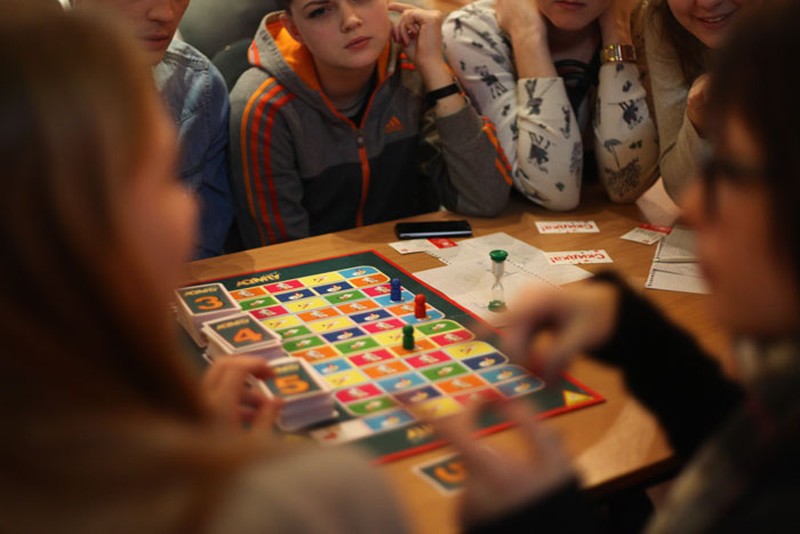
10. "Activate"
- Classic: 2
- Complexity: 3
- Duration: 3
- Number of players: 4–8
- Age: 6+
"Activity" is not much different from "Elias", but this game cannot be mentioned, because someone likes it much more than its main competitor. Speed players explain the words to their team: by drawing, pantomime, or synonyms - depending on what is dropped. The task is to be the first to score a certain number of points. The difficulty of the task can be chosen: if the team is ready for the test and successfully wins it, then it moves to the victory, respectively, faster.
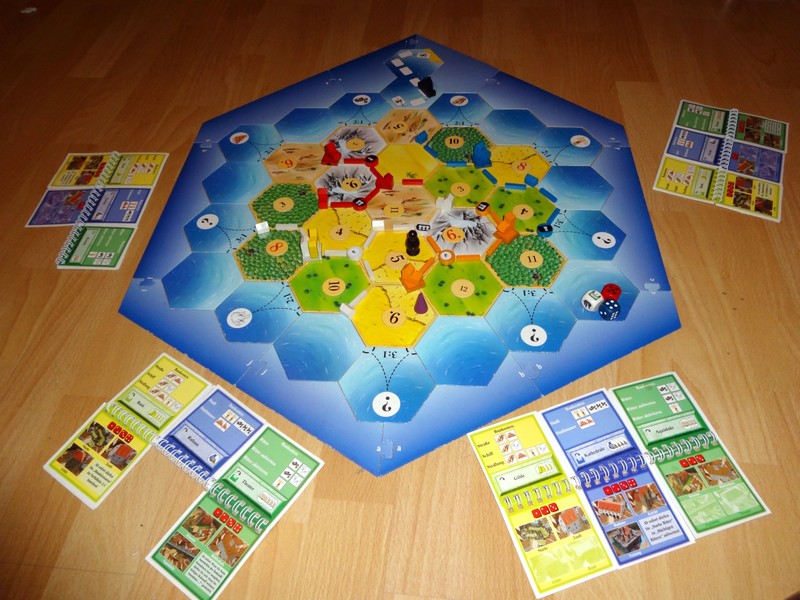
11. "Colonialists"
- Classic: 5
- Complexity: 5
- Duration: 5
- Number of players: 3–4
- Age: 12+
Of all the classic board games, the German game "Colonialists", perhaps, is equipped with the most difficult rules. Usually it takes hours to understand them, but the time spent pays off after: this is a real military and economic strategy, exciting and exciting. The task of the players, as you can guess from the description, is to create a colony on Catan Island and develop it faster than opponents, gaining twelve victory points. With one of five resources — wood, bricks, wool, grain, or ore — you need to create roads, cities, or settlements. And you need to think about the length of these roads and the ability of cities to defend. Just like in the legendary computer games like "Kazakov", only on your desk.

12. Twister
American bestseller Cards Against Humanity came up with graduates of an ordinary school in Illinois. The essence of the game - as funnier as possible to answer rather funny and sometimes indecent questions or to wittyly fill in the blanks in the sentences. The driver chooses the funniest answer, and the player who displays a remarkable sense of humor gets one point. The most bloodthirsty wins, as a rule, because in the USA, where tolerance is the main basis of social relations, this game is the only way to make fun of black people, Jews, Barack Obama and women. Russian manufacturers the games finally made a version in which there is no Americanism, replacing the popular US characters with the same Russians: Philip Kirkorov, Lev Leshchenko, and so on. On the official website of the game, developers offer roughly the following options: “No one can imagine that Lev Leschenko's favorite hobby is Baltic 9. In “Cards against all” it is not recommended to play to persons under the age of eighteen.
The game "Evolution" was invented by Russian biologist Dmitry Knorre in 2010 and has already been reprinted in English, French and German. The logical strategy is based on the principles of Darwinian theory: during the course, participants choose which signs they want to add to the already existing species. Also pay attention to food and external conditions. The game lasts until the cards remain in the common deck, and the winner is the one who scored the most points.